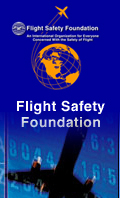|
ś≠°ŤŅéŚÖČŤá® ť£õŚģČŚģ£ŚįéÁü≠ÁČá
|
šļļśį£320
Disc violently broke apart inside engine, hurling one fragment more than half a mile 
Firefighters check the scene after a fire started outside an American Airlines plane on Friday at O'Hare International Airport in Chicago. By SUSAN CAREY and ANDY PASZTOR A 19-year-old disc violently broke apart inside the engine of an American Airlines Group Inc. jetliner taking off from Chicago's O'Hare International Airport on Friday, sparking a fire and touching off a wide-ranging probe into certain General Electric Co. engines, according to investigators and others familiar with the matter. The accident, which hurled one fragment of the disc onto the roof of a United Parcel Service Inc. facility more than half a mile away, started a fire in a pool of fuel under the Boeing Co. 767's right wing, National Transportation Safety Board investigator Lorenda Ward said at a briefing over the weekend. Of the 170 people on board, 21 received medical treatment for injuries sustained in using emergency slides to leave the plane, but all were released from hospitals by Saturday. The accident was unusual because modern jet turbines are designed to prevent such high-energy parts from being spewed outside the engines. According to one person familiar with the details, the engine-turbine disc had no history of performance problems, failures or mandatory safety fixes. However, at least four other planes powered by the same GE family of engines have experienced serious engine malfunctions since 2000, including a pair of single-engine failures while airborne. 
The fire started in a pool of fuel under the Boeing Co. 767's right wing on Friday. The twin-aisle jetliner, American Flight 383, was bound for Miami when the pilots aborted takeoff before the plane lifted off the runway. It came to a stop about 6,000 feet down the strip and the Chicago Fire Department responded, as plumes of black smoke erupted and the right wing sagged down to the tarmac. There was no fire in the cabin, only smoke. The safety board said a "stage 2 disc in a high-pressure turbine" inside a variant of the General Electric CF6 engine failed. The NTSB will investigate further, likely delving into both manufacturing issues and maintenance practices with the cooperation of the engine maker. Most of the disc had been recovered by Sunday, according to the person familiar with the details. The plane was built in 2003 and is one of 45 American had in its fleet at the end of 2015. According to the FlightGlobal database, the aircraft had flown 49,000 hours and made more than 8,000 flights as of August. Over the weekend, General Electric said its workhorse CF6 family of engines, with more than 4,000 currently in service, has powered seven wide-body commercial jet models and accumulated more than 400 million flight hours. Portions of the CF6-80 engine family have been subject to voluntary service bulletins, stepped-up maintenance and various federal safety mandates over the years, which isn't unusual for widely used engines types due to the scrutiny incidents, accidents and operating histories receive from regulators, airlines, government investigators and engine experts. But violent disintegration of some internal parts leading to explosive failures have dogged certain older CF6-80 model engines since 2000. One engine of a US Airways Boeing 767 experienced what is called "an uncontained failure" during ground tests that year, with no passengers aboard. In June 2006, the safety board looked into a similar ground-test accident at Los Angeles International Airport in which a disintegrating CF6-80 engine damaged an American Airlines 767. As mechanics repeatedly revved up the jet's engines to maximum power, one of them failed and shot out chunks of metal that penetrated the fuselage and went inside the other engine, according to an NTSB report at the time. The debris punctured the wing and spilled some 10,000 gallons of jet fuel, investigators determined. The leaking fuel started a fire that badly damaged the plane. The NTSB also discovered metal parts as far as 3,000 feet away. By August 2006, federal regulators moved to significantly tighten mandatory checks of certain CF6-80 engines, with the oldest ones subjected to a 70% reduction in the interval between inspections and repairs. After Friday's accident, American said it brought in a fresh airplane and transported the passengers to Miami. The Fort Worth, Texas carrier, the nation's largest by traffic, said it is cooperating with the NTSB's investigation and had no further comment. http://www.wsj.com/articles/
šļļśį£320
|
śźúŚįč
ť£õŚģČŚįŹŚćöŚ£ę Ťą™Á©ļšļ§ťÄöÁģ°Śą∂Ť≤†Ť≤¨Ťąáť£õŤ°ĆŚď°śļĚťÄöŚíĆÁ∂≠śĆĀť£õś©üŤ∑ĚťõĘÔľĆÁĘļšŅĚť£õś©üšłćśúÉŚõ†ÁāļŚ§™śé•ŤŅĎŤÄĆŚįéŤáīÁõłśíě„ÄāŤÄĆŤą™Áģ°Śď°Ť¶ĀŚĺóÁü•ť£õś©üšĹćÁĹģԾƝúÄŤ¶ĀÁĒĪť£õŤ°ĆŚď°śŹźšĺõԾƜąĖśėĮŚú®ŤľÉŚ§ßŚěčś©üŚ†īŤ£°ÁöĄťõ∑ťĀĒšł≠Áú茹įť£õś©üšĹćÁĹģ„Äā Á∂≠ŚüļÁôĺÁßĎ |




 11-02 NTSBŚįáśĖľ11śúą5śó•ŚÜćŚļ¶ŚŹ...
11-02 NTSBŚįáśĖľ11śúą5śó•ŚÜćŚļ¶ŚŹ...







